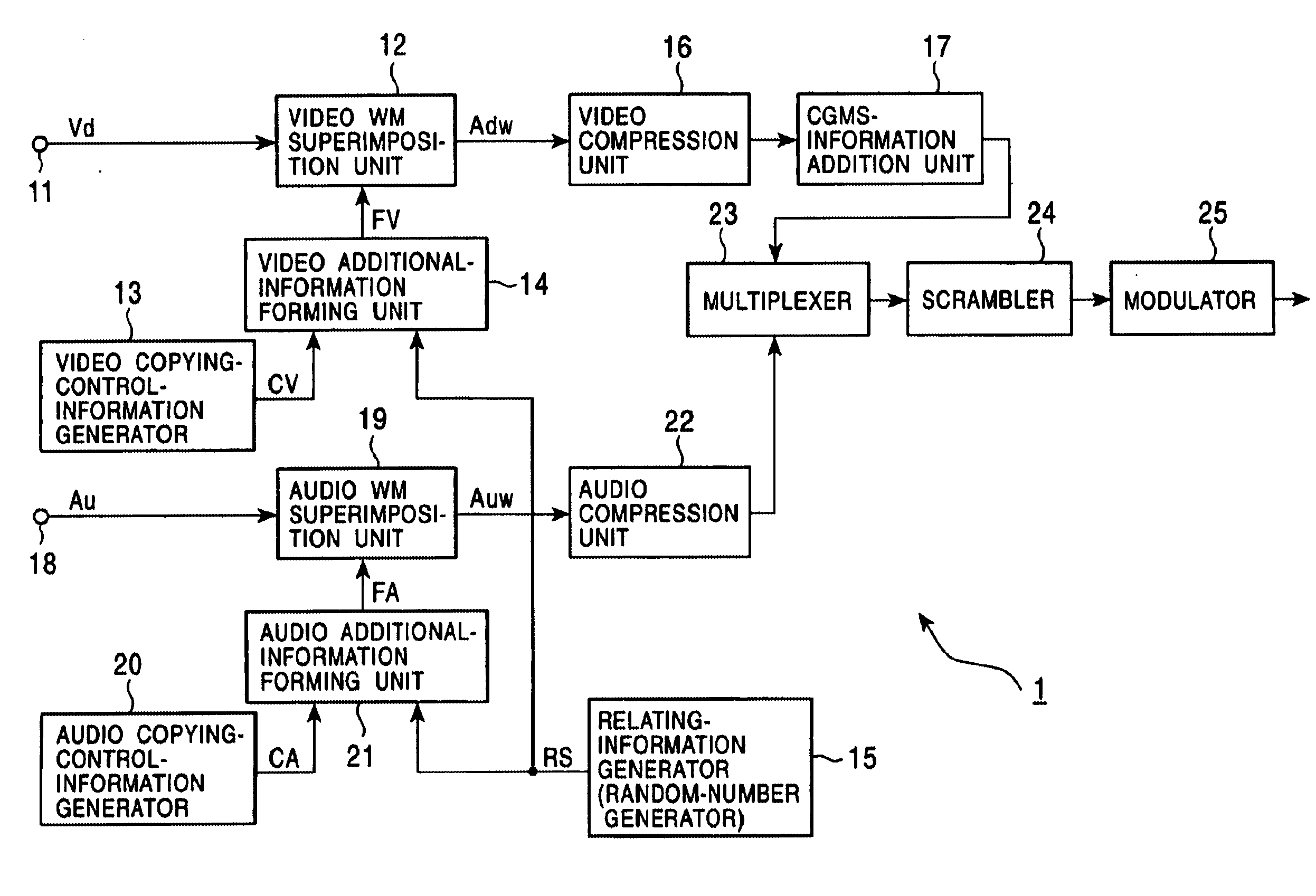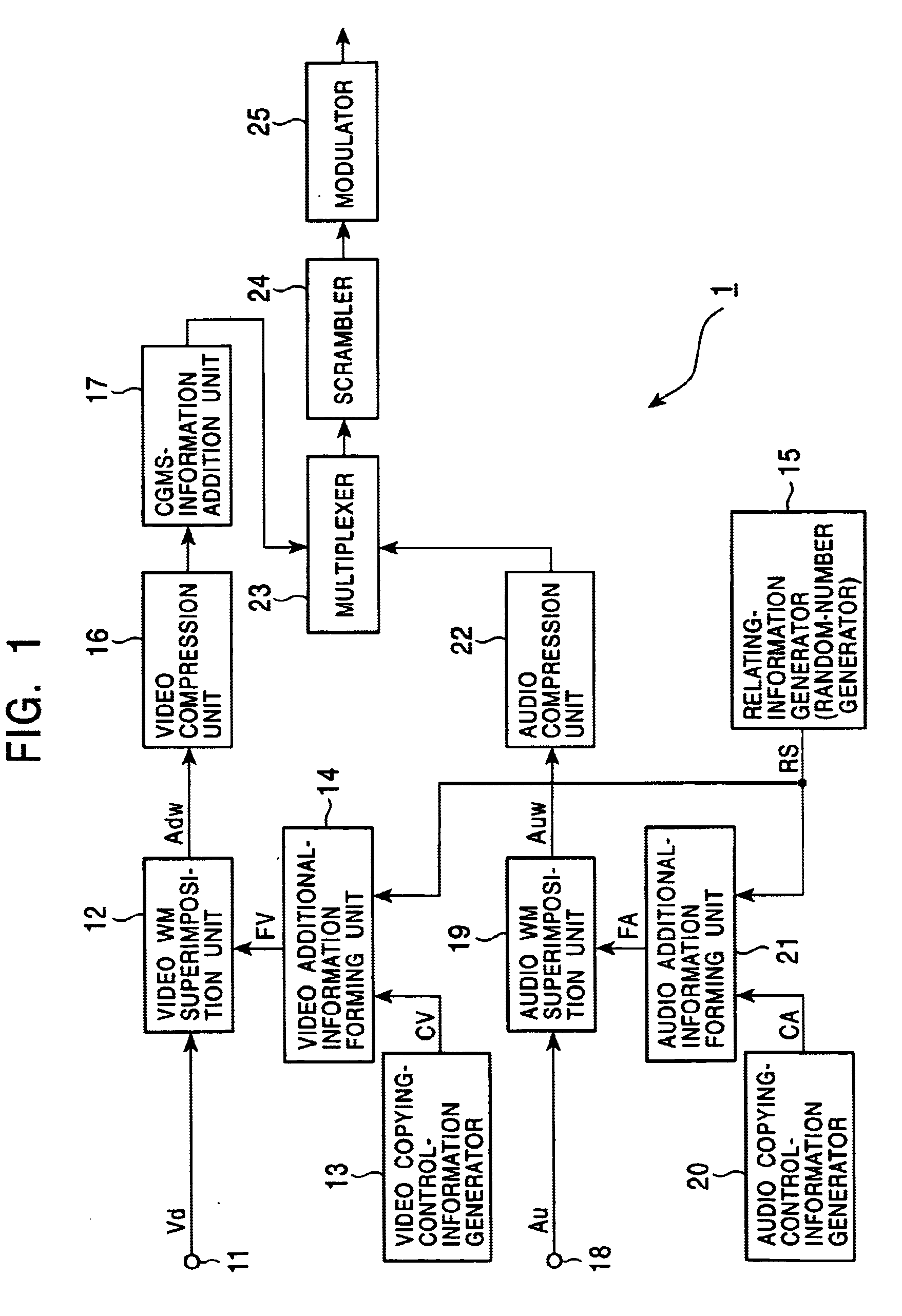Copyright protection method, information signal processing system, information signal output apparatus, information signal processing apparatus, information signal output method, information signal processing method, and information signal recording medium
a technology of information signal and protection method, applied in the field of copyright protection method and information signal processing system, can solve the problems of minimal loss, video signal or audio signal additional information embedded in video signal or audio signal according to digital watermark processing is not easily removed, and the copyright infringement incurred by illegal copying of video signal (image information) and audio signal (audio information) to be provided as digital content is becoming a problem
- Summary
- Abstract
- Description
- Claims
- Application Information
AI Technical Summary
Benefits of technology
Problems solved by technology
Method used
Image
Examples
case 7
In case 7 of the logical table shown in FIG. 12, both the copying control information superimposed on the video signal and that on the audio signal indicate that copying is not allowed (is prohibited) for further generations. This is a normal state. The determining unit 65 thus determines, as indicated by the two items of copying control information, that copying of the video signal and the audio signal is prohibited, and controls the writer 64 not to copy the video signal and the audio signal.
case 14
In case 14 shown in FIG. 12, both the copying control information superimposed on the video signal and that on the audio signal designate that copying is allowed. This is a correct state. The determining unit 65 thus determines, as indicated by the two items of copying control information, that the video signal and the audio signal can be copied (allowed), and controls the writer 64 to copy the video signal and the audio signal.
case 20
Case 20 in FIG. 12 represents the state in which copying control information is not superimposed on the video signal or the audio signal, and is thus equivalent to the state in which copying is allowed. This is a normal state. Then, the determining unit 65 determines that the video signal and the audio signal can be copied, and controls the writer 64 to copy the video signal and the audio signal.
Cases 2, 3, 4, 6, 9, 11, 12, and 13 in FIG. 12 designate that there is a discrepancy between the copying control information superimposed on the video signal and that on the audio signal. Since these cases are not normally generated, the determining unit 65 determines, based on the copying control information closer to a copy prohibiting state (tightly restricted copying control information), from the following three states, i.e., whether copying is not allowed (is prohibited), copying is allowed for only one generation, or copying is prohibited for further generations. According to this det...
PUM
| Property | Measurement | Unit |
|---|---|---|
| frequency | aaaaa | aaaaa |
| transmission rate | aaaaa | aaaaa |
| CV | aaaaa | aaaaa |
Abstract
Description
Claims
Application Information
 Login to View More
Login to View More - R&D
- Intellectual Property
- Life Sciences
- Materials
- Tech Scout
- Unparalleled Data Quality
- Higher Quality Content
- 60% Fewer Hallucinations
Browse by: Latest US Patents, China's latest patents, Technical Efficacy Thesaurus, Application Domain, Technology Topic, Popular Technical Reports.
© 2025 PatSnap. All rights reserved.Legal|Privacy policy|Modern Slavery Act Transparency Statement|Sitemap|About US| Contact US: help@patsnap.com



